We use information collected through cookies and similar technologies to improve your experience on our site, analyze how you use it and for marketing purposes.
Your privacy settings
We and our partners use information collected through cookies and similar technologies to improve your experience on our site, analyze how you use it and for marketing purposes. Because we respect your right to privacy, you can choose not to allow some types of cookies. However, blocking some types of cookies may impact your experience of the site and the services we are able to offer. In some cases, data obtained from cookies is shared with third parties for analytics or marketing reasons. You can exercise your right to opt-out of that sharing at any time by disabling cookies.
Manage Consent Preferences
Necessary
Always ON
These cookies and scripts are necessary for the website to function and cannot be switched off. They are usually only set in response to actions made by you which amount to a request for services, such as setting your privacy preferences, logging in or filling in forms. You can set your browser to block oralert you about these cookies, but some parts of the site will not then work. These cookies do not store any personally identifiable information.
Analytics
These cookies and scripts allow us to count visits and traffic sources, so we can measure and improve the performance of our site. They help us know which pages are the most and least popular and see how visitors move around the site. All information these cookies collect is aggregated and therefore anonymous. If you do not allow these cookies and scripts, we will not know when you have visited our site.
Embedded Videos
These cookies and scripts may be set through our site by external video hosting services likeYouTube or Vimeo. They may be used to deliver video content on our website. It's possible for the video provider to build a profile of your interests and show you relevant adverts on this or other websites. They do not directly store personal information, but are based on uniquely identifying your browser and internet device. If you do not allow these cookies or scripts it is possible that embedded video will not function as expected.
Google Fonts
Google Fonts is a font embedding service library. Google Fonts are stored on Google's CDN. The Google Fonts API is designed to limit the collection, storage, and use of end-user data to only what is needed to serve fonts efficiently. Use of Google Fonts API is unauthenticated. No cookies are sent by website visitors to the Google Fonts API. Requests to the Google Fonts API are made to resource-specific domains, such as fonts.googleapis.com or fonts.gstatic.com. This means your font requests are separate from and don't contain any credentials you send to google.com while using other Google services that are authenticated, such as Gmail.
Marketing
These cookies and scripts may be set through our site by our advertising partners. They may be used by those companies to build a profile of your interests and show you relevant adverts on other sites. They do not store directly personal information, but are based on uniquely identifying your browser and internet device. If you do not allow these cookies and scripts, you will experience less targeted advertising.
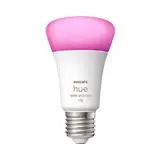
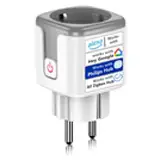
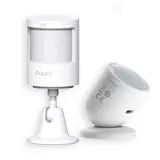
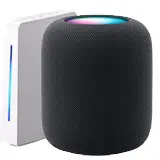
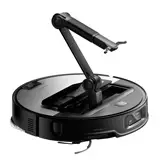

Motion Sensors: How Do They Improve Security and Comfort?
Can you imagine arriving home and the lights turning on automatically, welcoming you? Or receiving an alert on your phone if someone approaches your property without permission? All this is possible thanks to motion sensorsThese small devices are revolutionizing the way we live and protect our homes and businesses, offering greater security and comfort.
What are Motion Sensors and How Do They Work?
Motion sensors, also known as motion detectors, are electronic devices designed to detect movement in a specific area. Different types of sensors exist, each with its own technology and applications. The main objective is the same: to alert about the presence of unexpected or scheduled movement.
Common Types of Motion Sensors
It's basic operation is simple: when the sensor detects movement within its range, it sends a signal. This signal can activate an alarm, turn on a light, send a notification to a mobile device, or even start a video recording. The versatility of these devices makes them indispensable in many applications.
Enhanced Security: Protecting What Matters Most
One of the main benefits of motion sensors is improved security. Whether at home, in the office, or anywhere else, these devices can help prevent theft, intrusions, and other incidents.
Burglary and Intrusion Prevention
Motion sensor-equipped security systems can detect the presence of intruders on a property. Upon activation, they can alert homeowners or a security company, allowing for a quick and effective response. This can deter thieves and prevent burglaries.
Perimeter Surveillance
Motion sensors installed around the perimeter of a property can detect the presence of people or vehicles before they approach the main structure. This provides an additional layer of security, allowing for preventative measures to be taken before an incident occurs.
Real-time alerts
Many modern security systems connect to mobile devices, allowing for real-time alerts when motion is detected. This allows you to keep track of what's happening on a property, even when you're not there. We can check if it's a false alarm or a real situation requiring attention.
Examples of Applications in Security
Comfort and Convenience: Simplifying Daily Life
Beyond security, motion sensors also offer a range of benefits in terms of comfort and convenience. They facilitate task automation and the creation of smart environments.
Lighting Automation
Motion sensors can control lighting in different areas, turning lights on when presence is detected and off when the area is vacant. This saves energy and avoids having to hunt for light switches in the dark.
Climate Control
In smart climate control systems, motion sensors can adjust the temperature based on room occupancy. This optimizes energy consumption and ensures a comfortable environment.
Automatic Door Opening and Closing
In commercial and residential settings, motion sensors can control the automatic opening and closing of doors. This facilitates access and improves hygiene, especially in high-traffic areas.
Examples of Comfort Applications
Motion Sensor Installation and Maintenance
Proper installation and maintenance of motion sensors are crucial to ensure their correct operation and extend their lifespan. Here are some practical tips.
Installation Tips
Maintenance Tips
Comparative Table of Motion Sensors
Recommendations and Best Practices
To get the most out of motion sensors, it's important to follow some recommendations and best practices:
Conclusion: Invest in Safety and Comfort
Motion sensors are a smart investment to improve security and comfort in your home or business. From preventing theft and automating lighting to controlling climate control and facilitating access, these devices offer a wide range of benefits. By choosing the right sensors, installing them correctly, and following recommendations and best practices, you can create a safer, more comfortable, and efficient environment.
Ready to transform your space? Start exploring available motion sensor options today and discover how they can improve your life! Share this article with your friends and family so they can also benefit from this technology.
Related Posts
Smart planters: automatic watering for your plants
Tired of forgetting to water your plants? Going on vacation and worried about their well-being? Worry no more! Smart pots have arrived to revolutionize your plant care. What are Smart Pots? Smart pots are plant containers that incorporate technology to automate watering and, in some cases, even…
The best apps for managing a smart home
Home automation is no longer a thing of the future. It is the present. And the key to control it is... in your pocket. Can you imagine controlling the lights, the temperature, and even the security of your home from your smartphone? It's possible! And for that, you need the right apps. This article will guide you through the fascinating world of ...
Robot vacuums: How to choose the best model?
Tired of spending hours vacuuming your house? Imagine coming home after work and finding everything spotless, without lifting a finger! The solution exists and it's called a robot vacuum. These small appliances have revolutionized home cleaning, but with so many options on the market, choosing the best one can be overwhelming. Don't…
How to connect and sync devices from different brands
Have you ever been frustrated trying to get your Android smartwatch to work seamlessly with your iPad? Or maybe trying to send a file from your Samsung smartphone to your Apple laptop? Connecting devices from different brands can seem like a maze, but don't worry! This guide will show you how to do it simply and ...